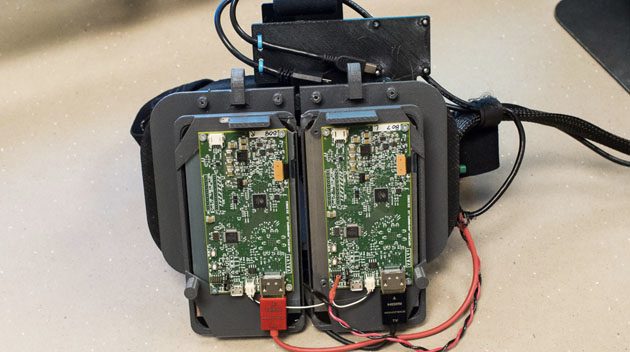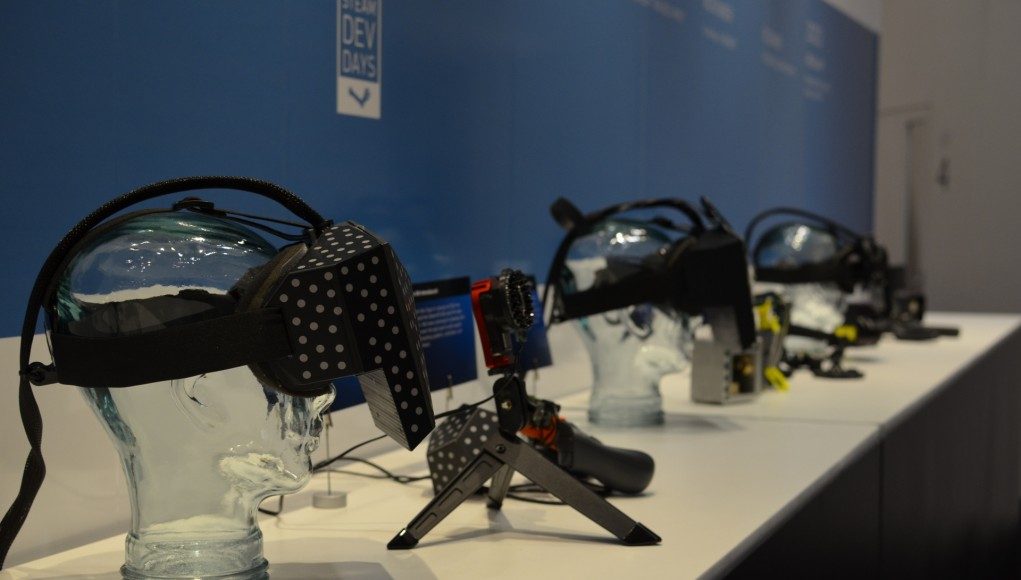In a revealing statement on Reddit, Alan Yates, a Valve employee who works closely on the company’s Lighthouse tracking system, claims that the Oculus Rift headset is largely derived from Valve’s research.
Back when Oculus launched the original Rift DK1 Kickstarter campaign in 2012, it looked as if the new company had won a formidable ally in its bid to bring virtual reality to the masses. Valve, the gaming giant behind Half Life, Portal, Steam, and much more, endorsed the project in Oculus’ campaign video, with Valve President and Owner Gabe Newell even making a rare appearance on camera saying of Oculus founder Palmer Luckey and the VR challenge “if anyone’s going to tackle this set of hard problems, we think that Palmer’s gonna do it…”

While there was collaboration early on, a rift seemed to form between the two companies following Facebook’s acquisition of Oculus in 2014. Around that same time, several key employees working on VR at Valve joined up with Oculus.
Since then, both Oculus and Valve have taken very separate paths along the road to consumer virtual reality, with any hint of that early common ground now seemingly vanished in the wake of a burgeoning battle to be the leading VR platform on PC. But that path is perhaps not as diverse as we originally thought.
Alan Yates, a Valve employee who has worked extensively on the company’s Lighthouse tracking system, has commented publicly and candidly stating that the foundation of the Oculus Rift is based on ideas lifted directly from an early research prototype that Valve had shared with Oculus. Commenting on the HTC Vive section or Reddit, Yates asserted:

While that is generally true in this case every core feature of both the Rift and Vive HMDs are directly derived from Valve’s research program. Oculus has their own CV-based tracking implementation and frensel lens design but the CV1 is otherwise a direct copy of the architecture of the 1080p Steam Sight prototype Valve lent Oculus when we installed a copy of the “Valve Room” at their headquarters. I would call Oculus the first SteamVR licensee, but history will likely record a somewhat different term for it…
The “Valve Room” Yates refers to was a proof-of-concept VR system developed by Valve which, for many who experienced it, was the tipping point in believing just immersive and important VR could become. Granted, the elaborate setup was far from consumerized.

We know that at a certain juncture in the Oculus Rift’s development, some key design changes were made. The Rift DK1’s original single display, fed with split, stereoscopic imagery seen by each eye, was one of the reasons why the headset was cheap to manufacture and offer to backers, at least in comparison to anything remotely comparable to what had come before. Its aspheric lenses too, provided the large field of view that wowed those who tried early prototypes, key to the original DK1.
Then, after multiple iterations using those key principles, across multiple publicly displayed (and presumably countless private) prototypes, in 2014 the company changed design direction quickly. The Crescent Bay prototype, which appeared at Oculus’ first developer conference ‘Connect’ in September of 2014, sported two displays (one for each eye) and a different style of lens, along with the low-persistence display technology that made its public debut on the ‘Crystal Cove’ prototype earlier that year.
Of course, during the early unofficial partnership between Oculus and Valve, much will have been exchanged between both parties, and it’s impossible to verify precisely how much cross pollination occurred.
It’s worth pointing out however that there are many more hardware factors that differentiate Oculus’ and Valve’s approach to their final consumer headset designs. The Rift’s industrial and ergonomic design alone is clearly completely divergent from HTC’s Vive for example and the inclusion of high quality headphones mounted on the Rift itself, along with a dedicated audio hardware pipeline are unique. Also, as Yates himself points out, although both the Vive and the Rift share the basic principal of Fresnel lenses, Oculus’ are entirely custom to the Rift.
Update 24/05/2016: I felt like the original piece ended abruptly with not enough context or credit to Oculus’ final design for the Rift so added an additional final paragraph above.







